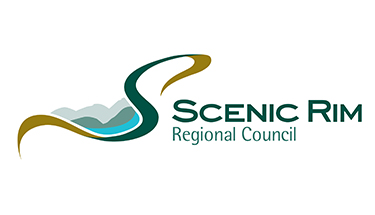State political parties and local candidates put on notice

Political parties and local candidates will be asked to support initiatives outlined in the Scenic Rim's Ten Point Advocacy Plan in the lead up to the October 2020 Queensland State General Election.
Via a Mayoral Minute endorsed at today's Scenic Rim Regional Council Ordinary Meeting, Mayor Greg Christensen said Scenic Rim communities needed to be considered as equals and not poor relations to the region's urbanised neighbours.
"There are many responsibilities, which fall under the State Government that can benefit our region," he said.
"We need our local candidates and major political parties to support some key issues that impact our residents and local businesses' future growth and economic prosperity.
"We are a large region with many towns and villages, meaning every economic activity relies on safe, effective road-based transport connectivity for both logistics movements, commuter movements and our visitor economy.
"As a Council, we are committed to upgrading our own road and bridge infrastructure, however we will need the new Queensland Government to pull their weight and invest in the critical transport connectivity on their State-controlled roads.
"We are also seeking commitments to finalise the planning of a passenger rail corridor between Beaudesert and Salisbury and fund a two-year program to develop a public bus service for our communities."
Equal access to grant funding is on the hit list with Council requesting a review of grant funding formulas to better support smaller regional Councils such as the Scenic Rim, which has a significant infrastructure burden.
"We are a unique regional Council with a large geographical footprint that has dispersed towns and villages with significant populations.
"It's these things that make our region so liveable, however as a Council with limited revenue, we maintain four swimming pools and four libraries, yet other regional councils may only have one of each.
"Most people don't realise that as a local government, we raise just 3% of taxes, yet we are required to manage 38% of all public infrastructure and 75% of all roads.
"What we are asking through our advocacy plan is for the State Government to commit to ten key priority areas and show the residents of the Scenic Rim that they matter just as much as their urban neighbours."
Division 2 Councillor Jeff McConnell said the advocacy plan had some extremely strategic points to take to the next state government.
"Out of the ten projects, eight are significant infrastructure projects that are desperately needed to assist the Scenic Rim with expected future growth," he said.
"Having more equitable access to grant funding is also critically important for the Scenic Rim."
Division 4 Councillor Michael Enright also acknowledged the significance of the infrastructure projects.
"These projects are purely the responsibility of the State Government, and it's appropriate that we use every opportunity to highlight the importance of these projects to the candidates," he said.
Council also committed at the meeting to keep the local communities aware of the responses received from political parties and local candidates to help inform their electoral decision making.
The ten key issues outlined in the plan (in no particular order or hierarchy) include:
Transport and logistics connectivity
- Mount Lindesay Highway/Bromelton connections
- Canungra Town Bypass
- Coulson crossing of the Teviot River
- Upgrade/maintain Boonah Rathdowney Road
- Cook Road (Gallery Walk) Bypass - Tamborine Mountain
- Beaudesert - Nerang Road - Rogers Flat section
Support for reasonable access for community amenity
- Passenger rail connection to Beaudesert
- Public transport (bus) services east and west - two-year development programs
Ongoing financial sustainability for service and infrastructure support
- Review of State Financial Assistance Grants distribution
- Review of tied and untied grants program
|
Scenic Rim Local Government Area |
||
|
|
Council-owned assets* |
State-owned assets |
|
Sealed roads |
961km |
562km |
|
Unsealed roads |
793km |
15km |
|
Major culverts |
494 |
87 |
|
Concrete floodways |
328 |
Data not available |
|
Concrete bridges |
63 |
35 |
|
Timber bridges |
69 |
18 |
|
Stormwater pipes |
78km |
Data not available |
*as at 30 June 2020
